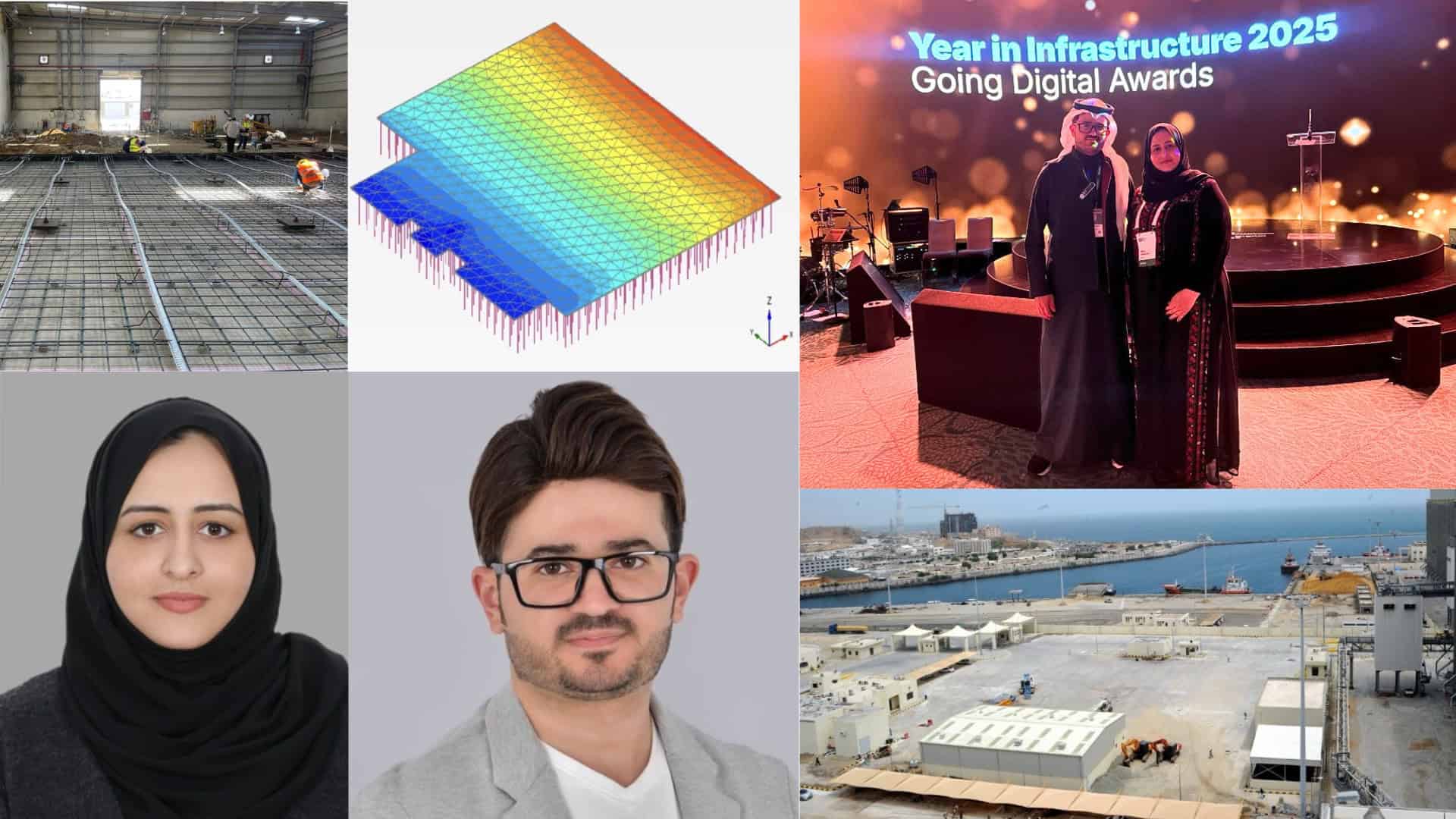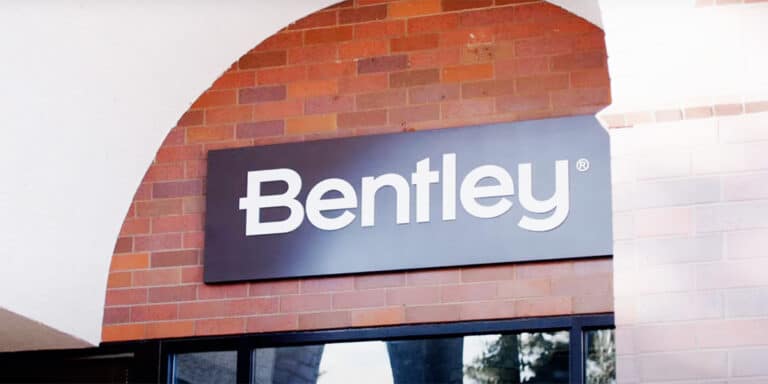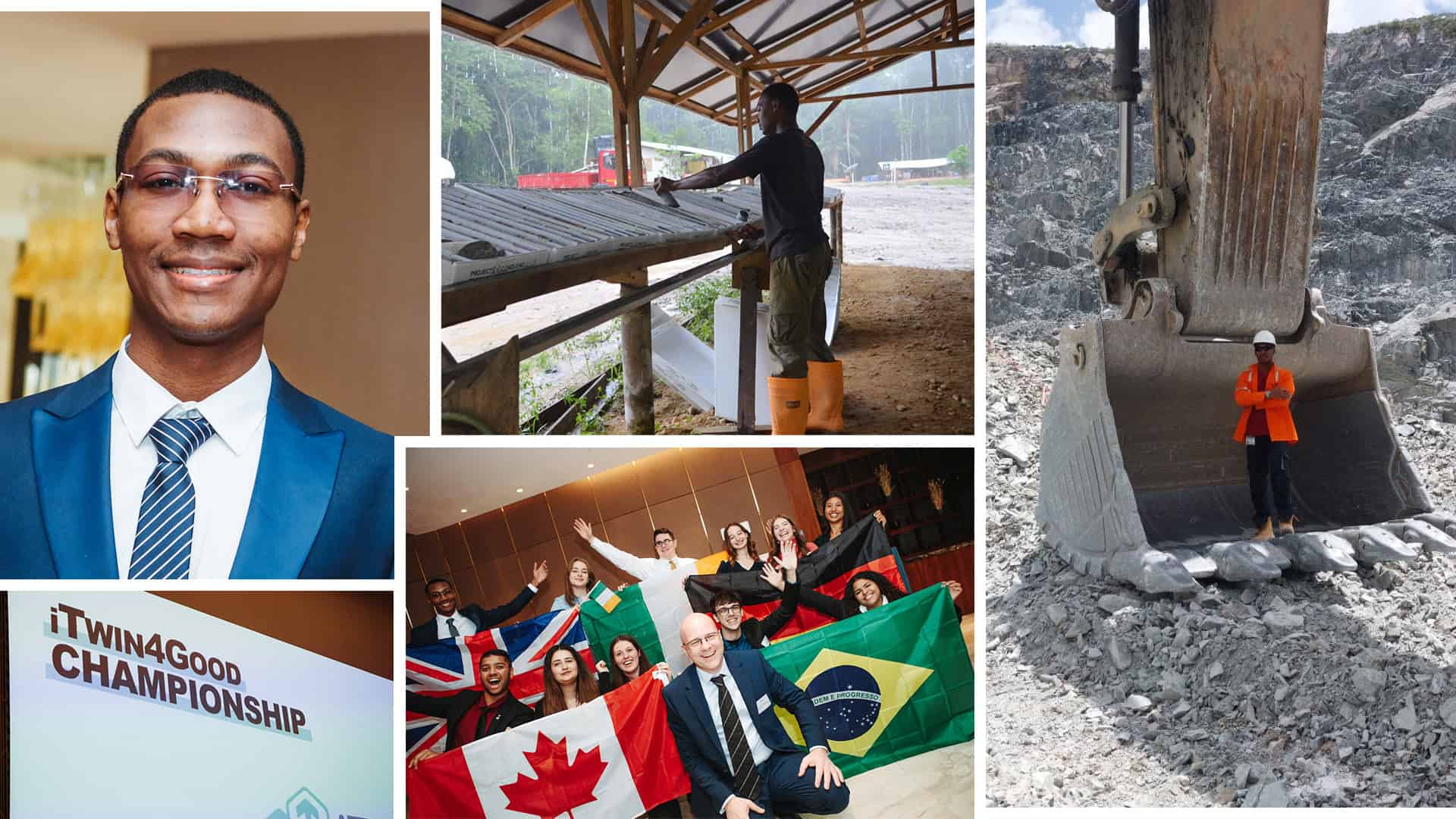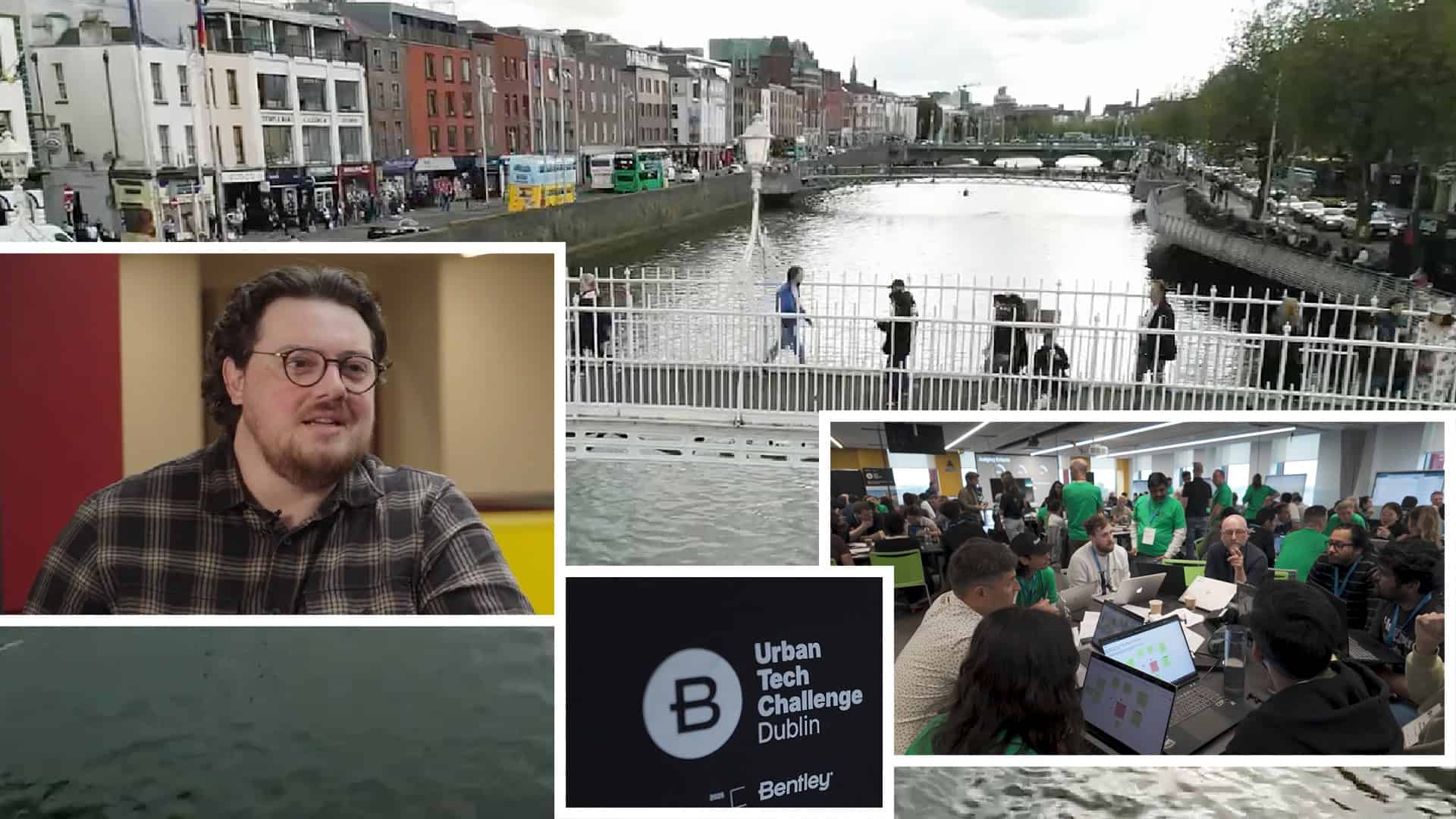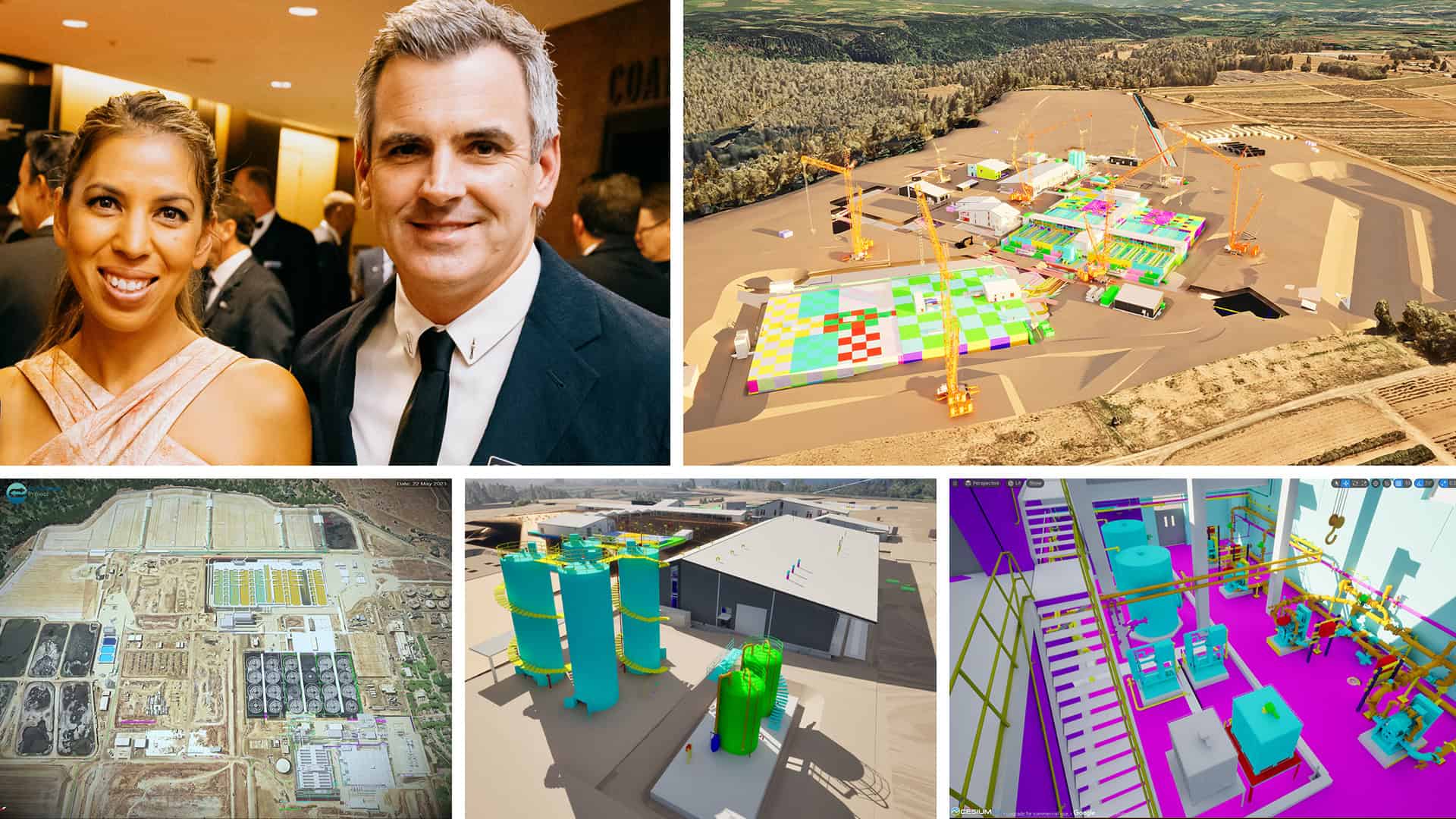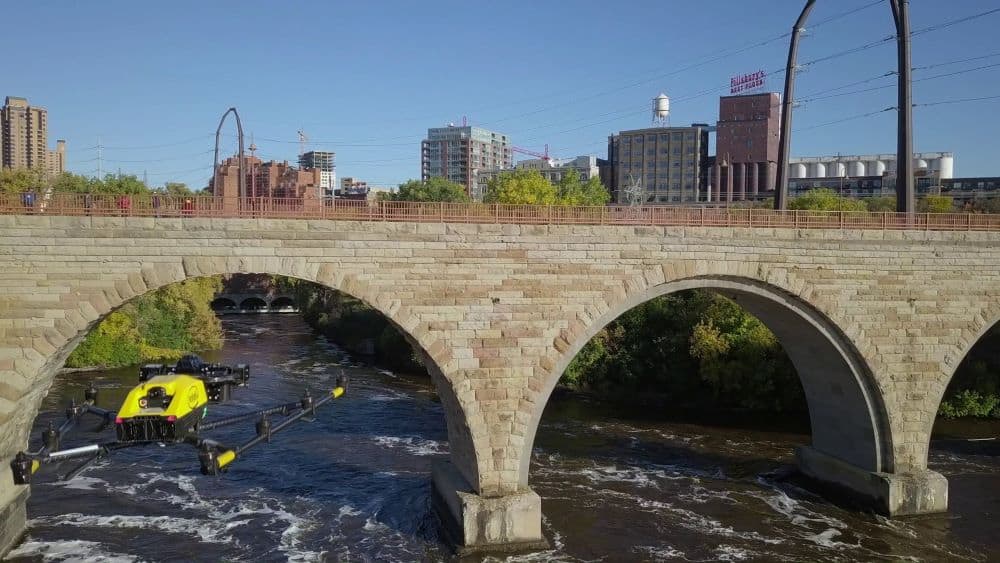Infrastructure is made of steel and concrete, but its future is being built in code. A new wave of engineers, scientists, and visionaries is using artificial intelligence (AI), open data, and curiosity to solve problems that once seemed too hard to crack — from cutting carbon to predicting floods to using digital twins to design cities. Take a look:
High Wire Act: From Jokes to Marathons, Bentley’s AI Guru Delivers Under Pressure
Karl-Alexandre Jahjah is going the distance to drive Bentley Systems’ AI breakthroughs and push the boundaries of infrastructure engineering. The avid marathoner brings a competitive, goal-oriented mindset to his role as director of applied AI — along with a curious, creative perspective and collaborative leadership approach honed through more than a dozen years on Quebec’s improv comedy circuit..
The former physics researcher leads a Bentley team building the next generation of infrastructure tools, including the generative AI-powered OpenSite+ infrastructure design software. “People are still skeptical about what AI can actually deliver,” Jahjahsays. “That’s why it matters that we get it right.”

Emily Zhang’s career transformation began with iconic bridges in the City of Bridges. While studying computational mathematics at Carnegie Mellon in Pittsburgh, the city’s historic infrastructure sparked her interest in infrastructure engineering. Growing up in China, Zhang had explored internships in finance and retail but found them unfulfilling. Seeking work with real-world impact, she eventually landed at Bentley, where she’s currently developing OpenSite+ with a specific focus on water flow and drainage modeling.
Zhang’s nonlinear path started in Bentley’s Graduate Development Program, whichbuilt her interdisciplinary infrastructure software expertise through four six-monthrotations. Now working remotely from Los Angeles, Zhang has found her calling in technology that transforms how we build the world around us.
“Choose an industry where your work feels meaningful,” Zhang advises. “For me, it’s not just about developing software — it’s about seeing the real-world impact of what I’m helping to create.”
Choose Your Own Adventure: How Joe Carr Is Helping Bentley Software Developers Unlock AI
Joe Carr thrives on transforming complex challenges into elegant solutions, from modeling urban traffic flows to designing coding competitions at Bentley.
After stints at a New York consultancy and a Montreal AI startup, Carr joined INRO, a transportation simulation company that Bentley acquired just two weeks after his arrival. Today he develops sophisticated simulation tools with the OpenPaths team.
The senior software developer’s big break came when he won Bentley’s 2023 Advent of Code challenge, catching the attention of Julien Moutte. The company’s chief technology officer, Moutte tasked Carr with designing a coding challenge to teach Bentley developers how to effectively use AI tools. The four-week competition, which attracted 200 developers from around the world, emphasized thoughtful AI collaboration over speed, encouraging participants to use tools like GitHub Copilot as problem-solving resources rather than shortcuts.
“It’s something you hear a lot, but it’s true — the AI of today is the worst it’s ever going to be,” Carr says. “It’s only going to get better.”
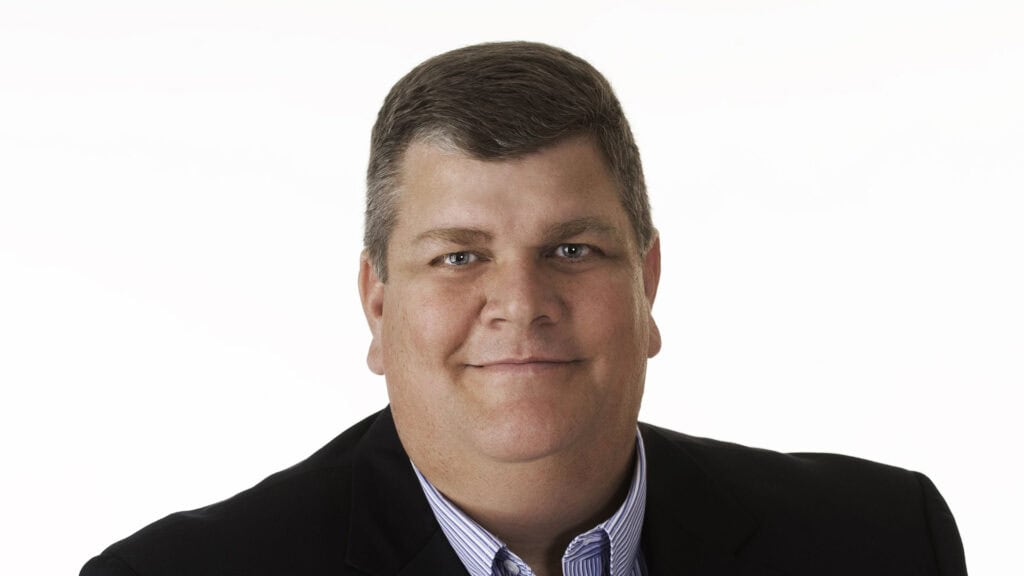
David Settlemyer possessed a rare gift: making the impossible seem inevitable. The North Carolina native with a Southern drawl and folksy wisdom saw a future where AI would transform civil engineering — decades before it became reality.
In the early 2000s, Settlemyer took a leap of faith when he left his successful civil engineering firm to help develop SiteOps — the first AI-powered civil design application — with startup Blueridge Analytics. While other engineers dismissed the concept, Settlemyer relentlessly championed it, becoming the bridge between complex software concepts and practical engineering needs. His gamble paid off:Bentley acquired Blueridge in 2014, and Settlemyer’s brainchild evolved into OpenSite+, groundbreaking software that helps civil engineers design sites up to 10 times faster than traditional methods. (OpenSite+ is also the theme of this story.)
Sadly, Settlemyer passed away from cancer at age 54, just as his life’s work reached fruition.
What distinguished Settlemyer was his rare combination of technical expertise and marketing and communication skills. Francois Valois, senior vice president of open applications at Bentley, called him “a brilliant engineer who, like an artist, could project into the future and envision the value a tool could create while maintaining an understanding of current reality.”
Engineering for Impact: How Apurba Tribedi Is Turbocharging Telecoms and Transforming Lives
Apurba Tribedi’s engineering mission began in childhood as he watched annual floods devastate his hometown of Malda, India. He wondered why no one built systems to prevent what he called the “clockwork catastrophe.” Frustration watching families repeatedly lose everything to predictable disasters crystallized his career path.
“When infrastructure is lacking, we must do something about it,” Tribedi says. “From childhood, I only ever wanted to be an engineer.”
As senior director of Bentley’s tower portfolio, Tribedi developed OpenTower iQ, a groundbreaking digital twin platform that uses AI and drone technology to automatically inspect cell towers with millimeter accuracy. OpenTower iQ has processed more than 40,000 towers in just two years, dramatically improving safety and efficiency while reducing costs.
However, Tribedi’s impact extends beyond software. The Tribedi Safe Drinking Water Project has provided clean water to more than 70,000 students across 50 schools in rural India. Now he’s tackling his next challenge: preventing catastrophic wildfires by monitoring power transmission lines with the same precision that transformed telecom.
“Happiness lies in selflessness,” Tribedi says. “When we dedicate ourselves to selfless acts with sincerity and passion, we gain a newfound, deeper meaning in our lives.”
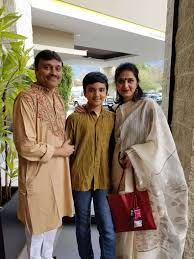
Victoria Fillingham has faced her share of workplace challenges — including being mistaken for a coffee server in her own meetings. Bentley’s senior digital transformation consultant has channeled those challenges into her dual mission to help infrastructure reach net-zero carbon goals and inspire the next generation of girls and women to enter science, technology, engineering, and math (STEM) fields.
Fillingham, also Bentley’s resident carbon specialist, helps infrastructure owners use digital twins and data analytics to understand and reduce their carbon impact across entire project lifecycles. She works with organizations like the U.K.’s National Highways and Irish Rail to standardize carbon data capture and identify the most impactful emission reductions.
She focuses on what she calls “visualizing the carbon story” by breaking down data silos in design, construction, and operations phases.
“It’s about creating that really solid data foundation, the information foundation, that can facilitate decision-making but also facilitate sustainable action for all parties,” Fillingham explains. “Not just designers, the contractors, but everyone that’s involved with the creation and operation of this asset.”
Reconstructing Reality: This Scientist is Teaching Machines to See in 3D
From Mars to modern cities, Renaud Keriven’s pioneering work in reality capture is powering a new era of digital twins led by AI and a new technique called Gaussian splatting. The rogue scientist launched his career by dangling a camera-packed sphere from an unauthorized helicopter over a French village near Mont Blanc. The guerrilla research mission sparked a revolution in “reality capture” — the art of creating detailed 3D models from ordinary photos.
In 2011, he co-founded Acute3D and quickly gained international traction across multiple industries with the startup’s Smart3DCapture software. When Bentley acquired Acute3D in 2015, Keriven’s technology evolved into what is now iTwin Capture, a cornerstone of Bentley’s digital twin platform. Now a distinguished engineer at Bentley, Keriven is working on his latest breakthrough: Gaussian splatting, which uses translucent ellipsoids to capture fine details like wires and foliage missed by traditional methods.
“I would really like reality capture to be completely automated, including the hardware. So you just press a button, and a drone takes off and takes every picture. And at the end, with no effort, you have everything available in the cloud.” That, he says, creates a more visible, accessible world for everyone. “I want everyone to be able to have a 3D model if they want one.”


